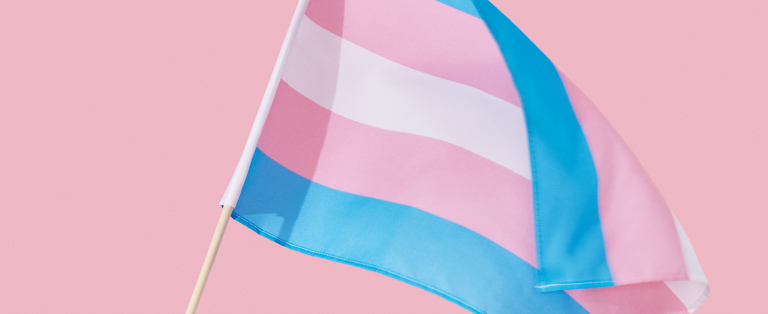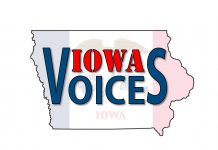I was a true believer.
I was a social justice organizer and facilitator before social justice overtook the world. I was on the forefront, introducing the concept of intersectionality to progressive organizations, and having people share their pronouns. My friends and I felt we were the cool kids, the vanguard of revolutionary work to change the world, to achieve what people in the social justice movement call “collective liberation.” I was deeply committed to the work of creating another world that was possible.
Within this context, I came out as a lesbian, and identified as queer. And then I fell in love, entered a committed relationship with my spouse, and gave birth to our first son. Two years later, my partner gave birth to our second son. Having children, and experiencing the absolutely life-changing love and devotion to them, was a game changer for me. And it was when, to quote Helen Joyce’s subtitle, ideology began to meet reality.
I immediately began to feel the tensions inside of me between what I felt intuitively and instinctively as a mother, and what I “should” be doing as a white anti-racist social justice parent. Because of my own experiences of perceived victimhood with my own parents’ rejection of my sexuality, I wanted to make sure I would honor my children’s “authentic selves.” I was primed to look for any clues that might suggest they could be transgender.
We raised both our sons as gender neutral as possible, with gender-neutral clothes, toys, and language. While we did use he/him pronouns and others in their life called them boys, we did not call them boys, or even tell them that they were boys. We made all language gender-neutral. In everyday reading of books or descriptions of people in our lives, we did not say “man” or “woman,” we said “people.” We thought we were doing the right and best thing, both for them and for the world.
At an early age, we noticed that our first son was a bit different. He was highly sensitive, and was extremely gifted. By about three years old, he started to orient more toward the females in his life than the males. Since he did not have the language, he would say, “I like the mamas.” Some of these differences we started to attribute to possibly being transgender. Instead of orienting him to the reality of his biological sex by telling him he was a boy, we wanted him to tell us if he felt he was a boy or a girl. As true believers, we thought that he could be transgender, and that we were to “follow his lead” to determine his true identity.
At the same time that this ideology was shaping my view of my son, I was also taking a very deep dive into attachment and child development. This opened my eyes to understanding the nature of attachment as hierarchical, and the fact that parents, not children, are meant to be in the lead. I began to struggle with the conflict between putting my child in the lead on gender and my deepening knowledge of my responsibility to lead and orient my child. Sadly, my commitment to ideology had the upper hand.
At around four years old, my son began to ask me if he was a boy or a girl. Instead of telling him he was a boy, I told him he could choose. I didn’t use those words—I thought I could be more sophisticated than that. I told him, “When babies are born with a penis, they are called boys, and when babies are born with a vagina, they are called girls. But some babies who are born with a penis can be girls, and some babies born with a vagina can be boys. It all depends on what you feel deep inside.” He continued to ask me what he was, and I continued to repeat these lines. I resolved my inner conflict by “leading” my son with this framework—you can be born with a penis, but still be a girl inside. I thought I was doing the right thing, for him, and for the world.
His question, and my response to it, would come back to haunt me for years, and continues to haunt me now. What I know now is that I was “leading”—I was leading my innocent, sensitive child down a path of lies that were a direct on-ramp to psychological damage and life-long irreversible medical intervention. All in the name of love, acceptance, and liberation.
About six months after my son began to ask me if he was a boy or a girl, he told my spouse that he was a girl, and wanted to be called sister, and she/her. I received a text message about this at work. On the way home that night, I resolved I would have to put all my own feelings away, and support my transgender child. And that is what I did.
With this one declaration, after months of refusing to tell our son he was a boy, we changed his entire world. We told him he could be a girl. He jumped up and down on the bed, happy, saying, “I’m a girl, I’m a girl!” (What a relief it must have been to him to actually have an identity to hold on to!). We, not him, initiated changing his name. We socially transitioned him, and enforced this transition with his younger brother, who was only two years old at the time and who could barely pronounce his older brother’s real name.
When I look back at this, it is almost too much to write about. The grief and the shock of what we did is so deep, so wide, so sharp and penetrating. How could a mother do this to her child? To her children? I truly believed that what I was doing was pure, right and good, only to later realize with horror what it could have lead to for my child. This horror still shakes me to my core.
It will not surprise readers of this site to hear that once we made the decision to socially transition our son, we received resounding praise and affirmation from most of our peers. One of my friends who had also socially transitioned her young child assured me that social transition was a healthy, neutral way of allowing children to “explore” their gender identity before puberty, when decisions would need to be made about puberty blockers and hormones. We sought out support groups for parents of transgender children where we went to find out if we had “done the right thing.” After all, our son showed no signs of actual gender dysphoria—was he actually transgender? At these support groups we were told what good parents we were. How kids on the autism spectrum (which he likely is), simply “know” they are transgender earlier than other kids.
At one of the support groups we attended, we were also told that transgender identity takes a few years to develop in children. They told us that during this period, it is very important to protect the child’s transgender identity, and therefore, you must eliminate contact with any family or friends who do not support this identity or go along with it. Yes, the gender therapist running this parent support group said this, and at the time, I believed her. Looking back, I now see this in a shockingly different light: this was an intentional process of concretizing transgender identity in children as young as 3 years old – the age of the youngest child in this group. When identity is concretized at this young of age, children will grow up actually believing they are the opposite sex. How could medicalization not follow?
The therapist also employed the same script that many adolescents use on their parents, helping parents of transgender children script letters to grandparents, aunts and uncles to declare a child’s transgender identity, and make conditions of engagement clear – you must use the name and pronouns, and embrace the new identity, or you will not have contact with the child.
After about a year of social transition for our older son, our younger son who was only three years old, began to say he was a girl. This came as a complete shock to us. None of the things that made our older son “different” were true for our younger son. He was more of a stereotypical boy, and did not show the same affinity for feminine things or females that his older brother did. We began to look more deeply at attachment again, and realized that the drive for “sameness” is a primal attachment drive. We felt that this assertion of being a girl was very likely a desire to be like his older sibling, in order to feel connected to him. This assertion of being a girl became more insistent when both brothers went to school part time, where the school program they were in included sharing their pronouns. Why could the older sibling be a “she” when the younger sibling could not? Our younger son became more and more insistent, and we became more and more distressed. The ideology was crashing with reality, and shaking what had felt like solid ground. If our younger son was driven by attachment to want to be a girl, could our older son also have this as part of what drove him? An attachment drive to be the same as me?
We made an appointment to see the gender therapist who we had met at the support group, in order to discuss our younger son. We truly believed that she would be able to help us sort out whether or not he was actually transgender, to pick apart the nuances of what could be going on for him as the younger brother to a transgender older “sister,” and the only “he” in a family of “shes.” To our shock, the therapist immediately began to refer to him as “she,” stating that whatever pronouns a three year old wants to use are the pronouns she will use to refer to them. She patronizingly assured us that it may take us more time to adjust, since parents have a hard time with this sort of thing. She expressed that it was transphobic to believe there was anything wrong with our younger son wanting to be like his older transgender sibling. When I pushed back, and asserted that I was not yet convinced our younger son was transgender, she told me that if I did not change his pronouns and honor his identity, he could develop an attachment disorder.
We were unconvinced, but again, we wanted to do what was right for our son, and for the world. We decided to tell him he could be a girl, and that night at dinner, we told him that we would call him she/her. Right after dinner I went to play an imaginary game with him and I wanted to be affirming. I put a big, warm smile on my face and said, “Hi my girl!” At this, my younger son stopped, looked at me, and said, “No mama. Don’t call me that.” His reaction was so clear, it made me stop. It pierced me to my core. I did not turn back after that.
For the next two years my partner and I dug deeper, agonized, and continued digging. Everything we thought we knew or believed that had led us to socially transition our older son began to unravel. I continued to study the attachment-based developmental approach, and learned more about autism and hypersensitivity. We decided not to socially transition our younger son. We began to see clearly that not only our younger son was not transgender, but that our older son was likely not either. We knew we had to do something, but struggled to figure out how. All I wanted was to go back in time, to undo what we had done. But I was still bound within the ideology. On the one hand, I felt clearer and clearer that my older son was not transgender, and that we were responsible for leading him down that path by mistake. On the other hand, I worried that if he was actually transgender, I would do great damage to him by reversing the social transition. This period of time was deeply agonizing, and was marked by incredible despair.
Somehow, my partner and I came to clarity that the deeper truth for our son was that he was not actually a transgender girl, but rather a highly sensitive, likely autistic boy who was born into this world without a skin, and for whom the structure of certainty the girl identity provided him was a type of protection, or defense. It also provided him a way of attaching to me through sameness, a primal need for his security in the world. We decided that since we were the ones who led him on this path, we were the ones that needed to lead him off if it.
A year ago, just before our son’s 8th birthday, we did just that. And while the initial change was hard, incredibly hard, the most immediate and tangible emotion we felt from our son was relief. Actual relief. In the days following my first conversation with him about going back to his birth name and pronouns, my conversation about how males cannot be females, and that we were wrong to tell him he could choose to be a girl, he was at first very mad at me, then sad. Then the next day, I felt my son rest. I felt him release a burden, lay this adult burden down, that he, as a child, was never meant to carry. He felt incredible relief. He came to rest.
Since that time, we have been healing. He has been healing. It was not easy, but my son is happy and thriving. We have watched him coming to a deeper peace with himself as a boy, and he is blossoming and growing. For now, he is safe, and as each day passes, he grows into himself more. As for our younger son, he is also happy, thriving and healing. Once his older brother became his older brother again, he happily and almost immediately settled into his identity as a boy — a further validation of our insight into the primal attachment drives that were underneath his pursuit of sameness for so long.
I fear for the future, the future for a sensitive, feminine, socially awkward boy who has spent his early childhood years actually thinking he was a girl. I fear for what our culture, our institutions, his peers, and the internet will tell him. I fear the power of the state, that seems hell bent on destroying the parental child relationship. No matter what the future holds, I will never ever stop fighting to protect my sons.
I am no longer a true believer.
This experience for me has felt like leaving a cult, a cult that would have me sacrifice my child to the gods of gender ideology, in the name of social justice and collective liberation. I have left this cult, and I am never turning back.
Once one brick was pulled out of the wall holding up this belief system, the rest of the bricks tumbled. Now I sort through the rubble, and I seek to slowly and carefully rebuild. Rebuild my values, my view of reality, my belief system, my relationship to myself, to my children, and my understanding of the world. Whatever may emerge, the protection of my children will be the compass for every step on the road ahead.
End note: I would like to express my sincere gratitude to both the 4th Wave Now blog and the Gender a Wider Lens podcast. I discovered both the night after my partner and I made the decision to change course with our son, and they have helped us immensely. Thank you for your courage.















